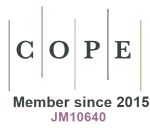Downloads
How to Cite
Rather, R. A., Saha, S. C., & Dhawan, V. (2015). The Most Favourable Procedure for the Isolation of Cell-Free DNA from the Plasma of Iso-Immunized RHD-Negative Pregnant Women. Journal of Circulating Biomarkers, 4(1). https://doi.org/10.33393/jcb.2015.2062
Issue
Section
Original research article
Statistics
- Abstract views - 669 times
- PDF downloads - 404 times
Sign up
banners150
Most popular articles in the last 30 days
-
206
-
160
-
157
-
152
-
97









